Flange brushes: features and varieties
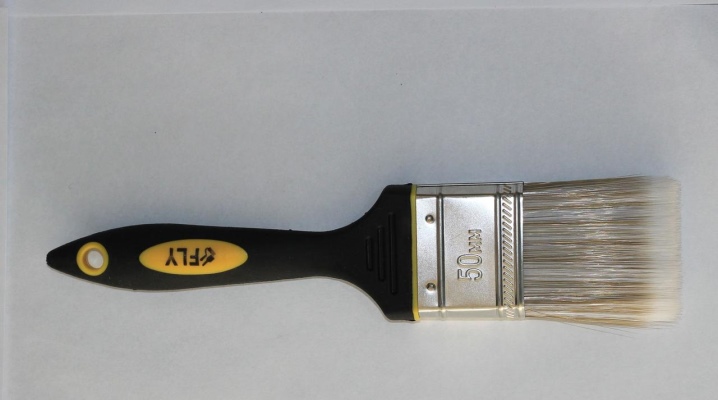
Modern painting work is often carried out with a roller or spray gun - these tools help to quickly and evenly apply the composition to a large surface. But the usual paint brushes do not give up their positions, and their flute variety is especially popular and in demand.
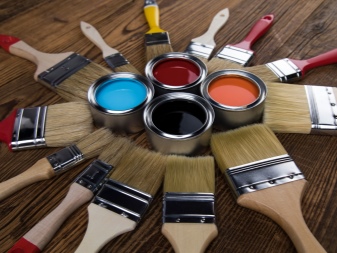
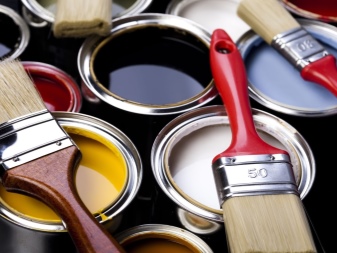
What it is?
A flute brush is a flat brush that can be used for a wide variety of painting and painting tasks:
- painting of flat and embossed surfaces (fences, gates, railings, structural elements, walls, door leaves, window sashes, window sills and slopes, baseboards and cornices, furniture);
- finishing - smoothing out the marks from the pile of the "coarser" brushes;
- gluing wallpaper with glue, although there is a special brush for this;
- in painting (oil, acrylic, watercolor) - applying wide colorful strokes on a large-scale canvas, filling the background, creating soft gradients, glazes.
This brush consists of a wooden or plastic handle and a dense bundle of shovel-shaped nap, enclosed in a flattened metal holder. Under the clip, the bristles are fixed with an adhesive with epoxy resin. The gluing should be of high quality, then the bristles will not fall out. The hand grip is ergonomic, fits very comfortably in the hand. In wide models, it is shortened.
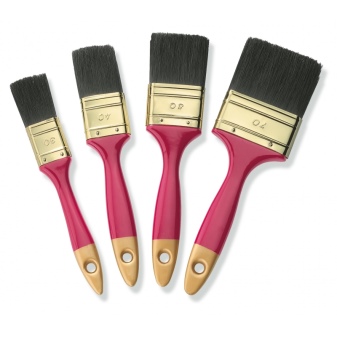
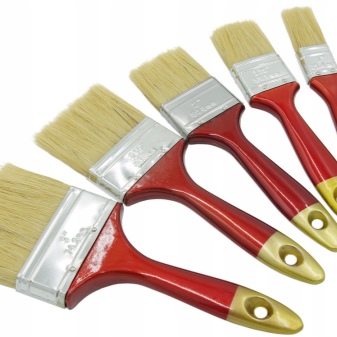
Flutz holds a large amount of paint that does not drip from the brush. The strokes are uniform, streak-free and furrow-free. The layer of the applied composition (varnish, impregnation, primer, paint, glue) turns out to be even and smooth, without smudges. The very concept of "fluting" refers to the leveling treatment of a freshly painted surface.
There are similar products in the catalogs of many domestic and foreign manufacturers: Krafor (Russia), Matrix (Germany), Harris (UK), Anza (Sweden)... Domestic Stayer brand, which produces brushes in several lines: from Standart and Euro to more expensive Profi and Lux.
A type of flute instrument is a radiator brush. Its elongated handle has an angle of inclination of 30-45 degrees in relation to the holder with a bunch of pile, which allows it to penetrate into hard-to-reach internal parts of heating radiators and other sectional structures. The width is usually small, from 15 to 30 mm, but there are options up to 75 mm.

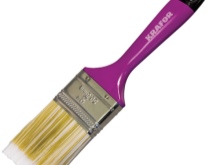
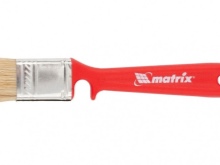
The long handle will help you reach the joints of the ceiling and walls, interior corners of furniture.
Materials (edit)
The quality of the bristles of this type of flat paint brush must be high, because the output should be a perfectly even coating. According to the raw materials used, products are classified as natural, synthetic and combined.
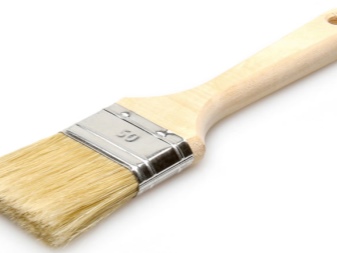

Natural
Traditionally, since ancient times, pig hair has been used to make all kinds of brushes and brushes. It is extremely elastic, durable, resistant to various solvent formulas, absorbs well and evenly "gives off" paint. This is due to the fact that the bristles have a rough structure with microscales and a conical split tip. For flutes, a processed drawn bristle is taken, obtained by pulling the hairs to a length of at least 57 mm. Sometimes drawn bristles and stock bristles are combined. Natural hair colors: white, yellow, black, gray. Black hair is most appreciated. High quality raw materials - boiled, bleached.
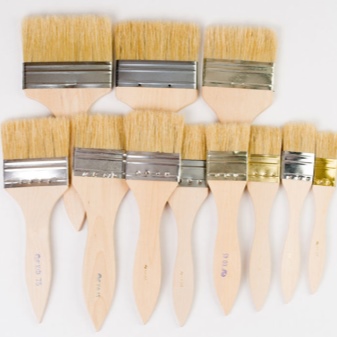
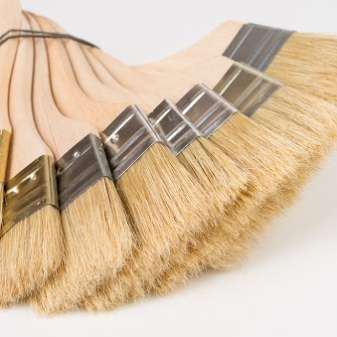
The bundle must be uniform in color, there are certain GOST standards for the density of the packing and the percentage of moisture, fat, and impurities. The bristles are arranged in several rows, separated by wedge inserts, which create a kind of cavity-pockets for holding the paint. The natural composition of the brush works best with oil-based paints, drying oils, varnishes. When working with water-soluble paints and varnishes, such a tool will gradually swell and lose elasticity.
Natural horsehair is not used for painting tools in the form of 100% filling - it is too soft, wears out faster, holds the paint worse. But since it is cheaper, it is often combined with pork.
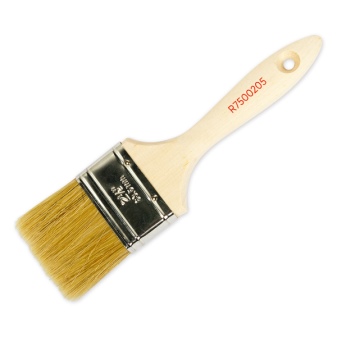
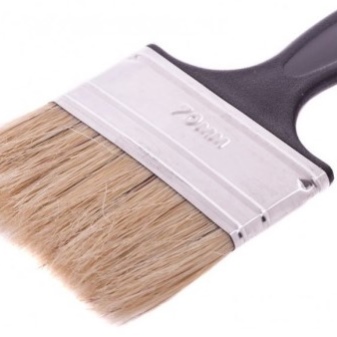
Badger hair brushes are produced for artists. These are exclusive products in a beautiful grayish black color. Badger hair has several categories, depending on which part of the skin it is collected from.
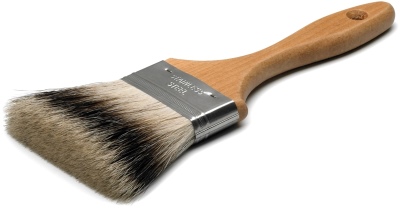
Synthetic
Artificial pile is made from polyester and polyester raw materials. Such brushes are recommended for working with water-based paint materials, since synthetic hair does not swell when in contact with water, retaining its shape. In such bristles, hollow channels and a conical, bifurcated shape at the tip are artificially created. But the absence of flakes in the structure still lowers the level of the paint intake. Synthetic fibers are also combined, for example, brushes made from a mixture of nylon and polyester have excellent performance.
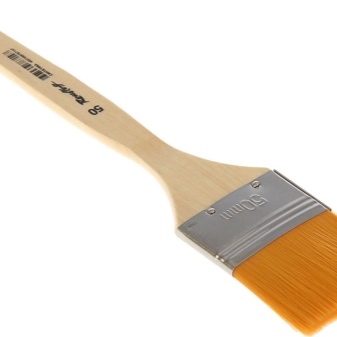
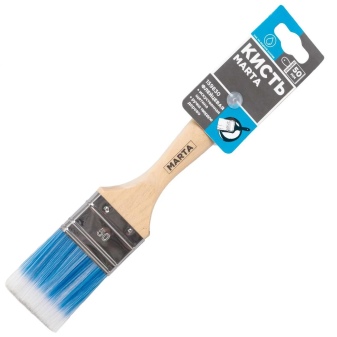
Combined
Many professional finishers prefer this type. It combines the advantages of natural and artificial raw materials. Excellent absorbency, high paint yield, elasticity, wear resistance - these technical characteristics the brush acquires due to the harmonious ratio of different fibers. Excellent results are obtained with tools with a natural bristle content of at least 25%.
The flange handle can be made from wood (natural, painted or varnished) or from various plastics and polymers. The most comfortable options are with a two-component rubberized handle.
The clip is a corrugated metal strip. Tinned cold rolled sheet or stainless steel is most commonly used. Steel can have brass, chrome, copper, nickel plating.
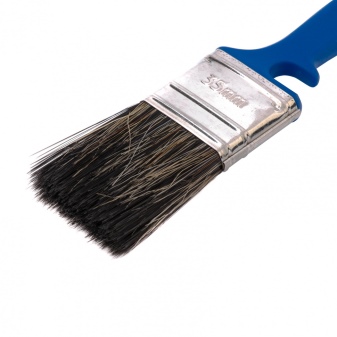
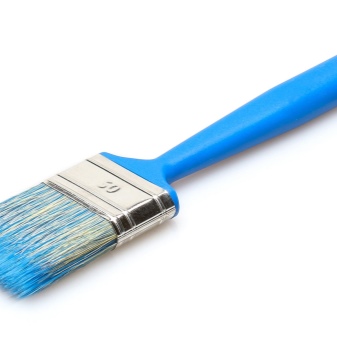
This is often the difference between expensive imported models, for example, the Wooster Q3108 Softip (USA).
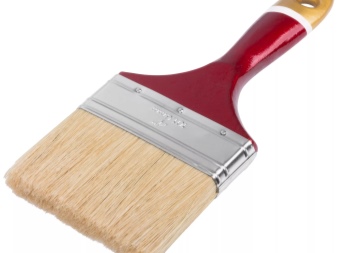

Dimensions (edit)
The width of the flutes ranges from 25 to 120 mm. Pile thickness - 10-20 mm. The length of the bristles is usually 40 to 70 mm. According to GOST, such brushes are marked with the letters KF (flange brushes) or KP (flat). The numbers indicate the width of the brush. Modern marking of brushes in the euro format can be indicated in inches and affixed with size numbers from 1 to 5. The ideal paint intake and paint yield are influenced not only by the raw material of the pile, but also by the balance of its dimensions - width and length.
An important parameter is the proportion of bristles with the maximum length, the so-called TOPS, which determines the density of the brush.
- The minimum brush sizes are ¾ "(20 mm) and 1" (25 mm). Such products are intended for painting skirting boards, various gratings, thin pipes.
- Brushes 35-38-40 mm are ideal for painting wider skirting boards, curtain rods and standard piping.
- A two-inch flange KF-50, KP-50 mm standard is a very popular size. It is used for working with furniture, painting railings, windows, impregnating and varnishing wooden stairs.
- Brushes 63 to 75 mm are best used for door leaves, walls, fences and more.
- The 4 "or 100-120 mm width is indispensable for painting floors, parts of the facade and other large flat surfaces.

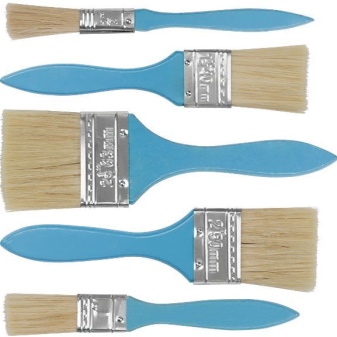
How to choose?
Convenience of work, the amount of time spent and, most importantly, the quality of the result depend on the correct choice of a brush. First of all, it is important to correctly calculate the required tool size. A large area will be difficult to paint perfectly, without streaks, using a narrow brush. And it will take unreasonably a lot of effort and time. Too wide a flute will make it difficult to paint accurately, without going over the edges of the limited area.
When purchasing a brush, be sure to pay attention to the reliability of the bristle attachment: the cut must be even, there should be no hairs sticking out of the common bundle and falling out. Test this by pulling slightly on the bristles. And also they should not break when bent, this happens when the material is overdried. In a good brush, the pile is silky, resilient, not loose, well-padded and elastic. It should not smell and leave greasy marks.
If you use the flutes on rough surfaces (on untreated brick, concrete, unplaned boards), the natural bristles will quickly wear off and the brush will “go bald”. But such a surface will help "grind off" and align the hair of the instrument. If necessary, make a few swings along the concrete wall and the protruding bristles will disappear.
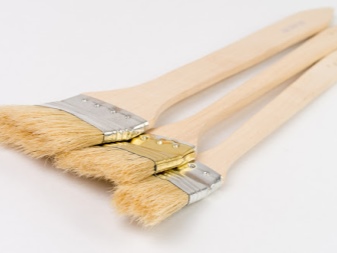
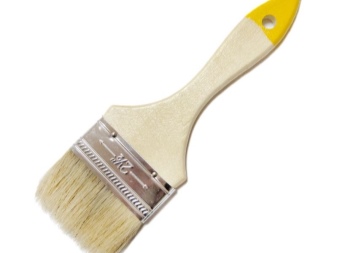
Check the fasteners of the metal rim itself: the fastening studs should not be loose, rust stains and dents, sharp ragged edges are unacceptable on the metal.
The comfort of the handle is very important, especially if large-scale painting work is coming: hold the model in your hand, choose the one that is comfortable for your brush. The fingers should not slip, ensuring a good grip on the tool. Opt for quality durable plastics, polymers, or smooth sanded hardwoods. Soft, untreated wood will absorb water, which can cause the clip to open and lint fall out. It is believed that it is easier to clean the paint smudges with a polymer handle.
Very convenient brushes with a hook-hanger, allowing you to fix the tool on the bank in minutes of a break in work. Many master painters independently make such a device from wire, but, of course, it is more pleasant when the manufacturer of the goods thought about such a nuance.
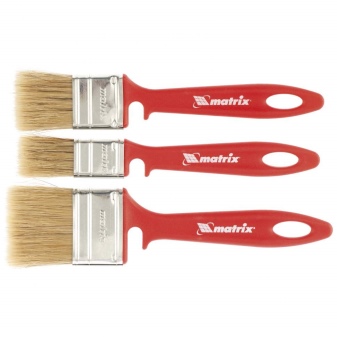
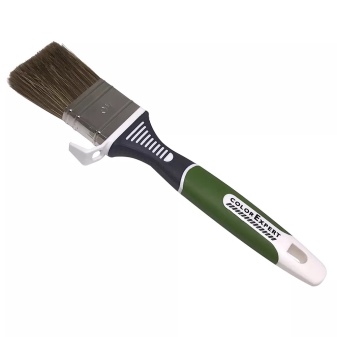
Before use, the brush is recommended to be washed in soapy water, rinsed and dried. This will remove possible grease and dust on the pile, it will straighten, the painting will be more uniform.
After using the brush, squeeze it against the edge of the can, and then thoroughly clean it from the remaining paint and dry it. Water-soluble paint will be removed with soap and water, and oil paint will be removed with solvent. For products made of synthetic hair, you cannot use a nitro solvent, it will corrode the bristles.
Store the brush in a horizontal position so that it does not deform.

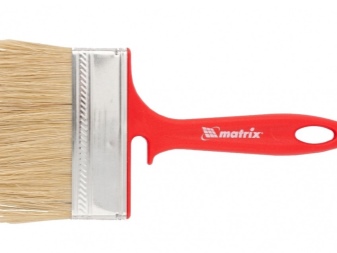
See below for an overview of flute brushes.













The comment was sent successfully.